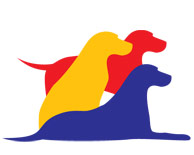Are little dogs different? Yes! And no. Dogs are dogs, from a training point of view, but there are some special considerations for the tiny dog. House training is often the most noticeable complaint of small dog owners. Being picked up and held are issues for the little ones. Napoleon syndrome is another problem with small dogs.
Small dogs are often described as more difficult to house train. There is no physical reason this should be true. Yes, small dogs have small bladders, but they have small bodies. I believe the difficulty in house training small dogs is the ease with which the small dog goes behind the couch or into the living room to eliminate. If you have a Great Dane, it only takes one accident inside and you will go to great lengths to prevent another accident. In order to house train a small dog, you must watch them like a hawk! Baby gates, exercise pens (like a play pen for dogs), and a leash can help you keep track of your small puppy. Because small dogs eliminate just a tiny amount each time, it is easy to miss a spot. Your tiny puppy can eliminate ten to twenty times before the smell and the dampness are discovered. By this time, the puppy has a habit of eliminating in the house. Prevention is so much easier than cure!
Little dogs often dance out of reach when someone tries to pick them up. It makes sense if you look at this from the dog’s point of view. Say, for example, the dog is six inches tall. Someone five feet taller than the dog leans over the dog. Pretty scary! Many little dogs can be made more comfortable with a little warning. I ask little dogs owners to warn their dogs by saying, “Pick up!” Many little dogs will be much more comfortable with just this little warning.
Holding a little dog can also cause problems. A dog that is held cannot express his desires or needs. Many small dogs begin to bite people because they cannot get away from strangers trying to pet. Please, let your little dog walk on his own four feet. Your tiny dog can then move away from petting that is not desired. Even on a leash a small dog has the choice to move away, or even move toward, an interaction.
Bark, bark, bark! Small dogs are often very barky. If you had to live in the land of giants, where everyone was five or more feet taller than you, you might make a lot of noise too! If you have a little dog, it might take extra effort on your part to teach calm and quiet behavior. If you yell at the dog for barking, the dog may think you are barking also. Reward and give attention to calm and quiet behaviors, while ignoring barky, excited behaviors. Your small dog can learn to be a calm quiet and confident pet.
Remember that life at six inches tall can be challenging. Think about things from your small dogs’ point of view before you become angry.
Happy Training!
Tricia Fagan
Certified Professional Dog Trainer – Knowledge Assessed
trainer @ dogSgonegood.com (remove spaces to send an email)
(713) 557-1949



